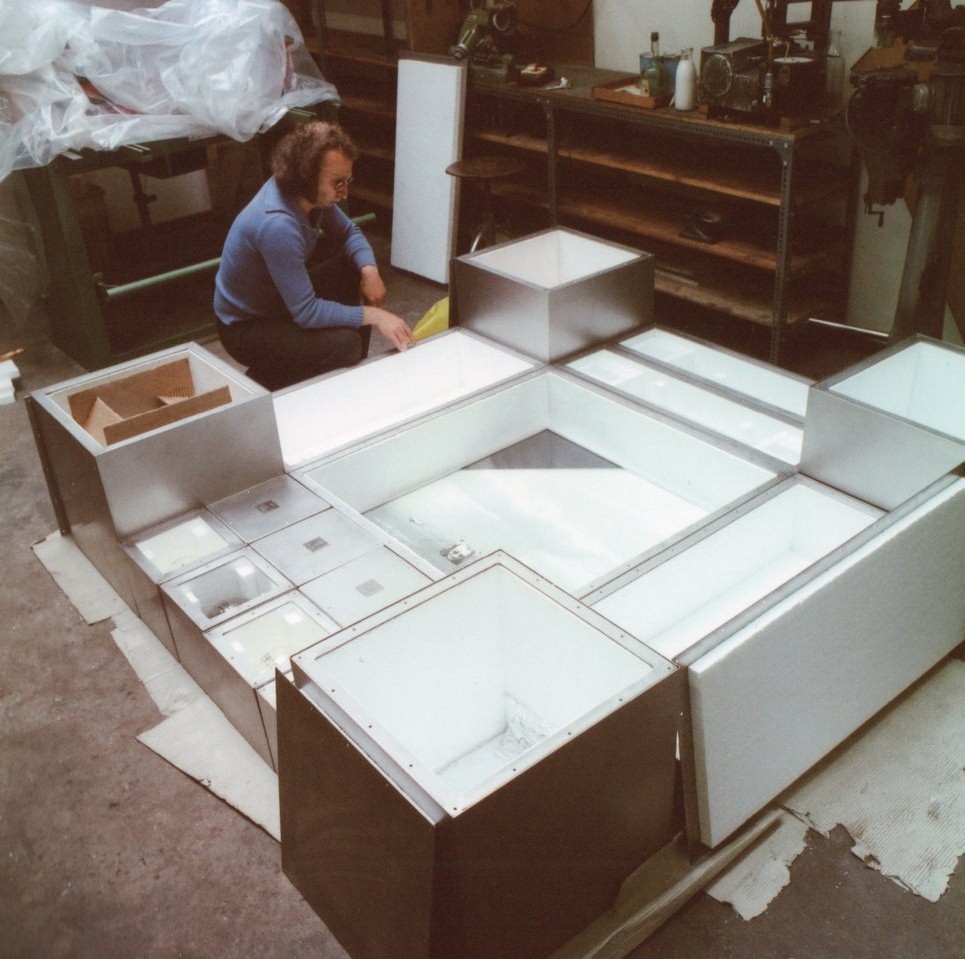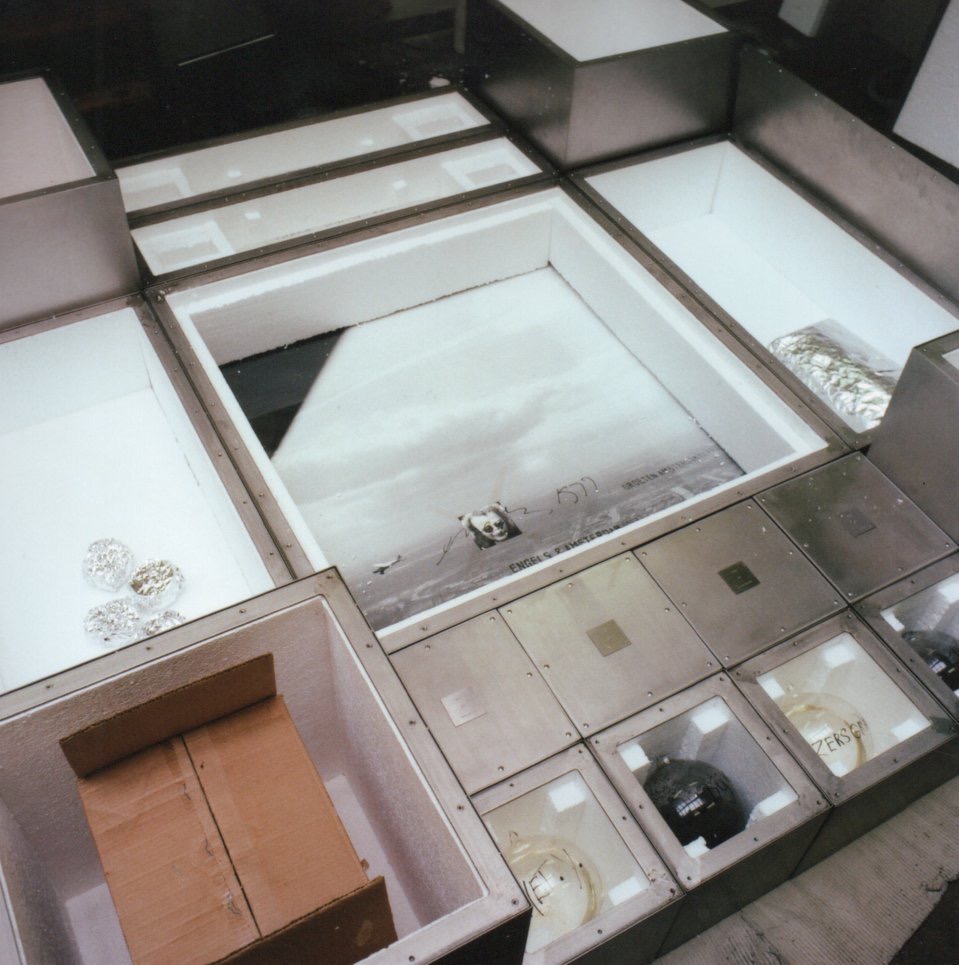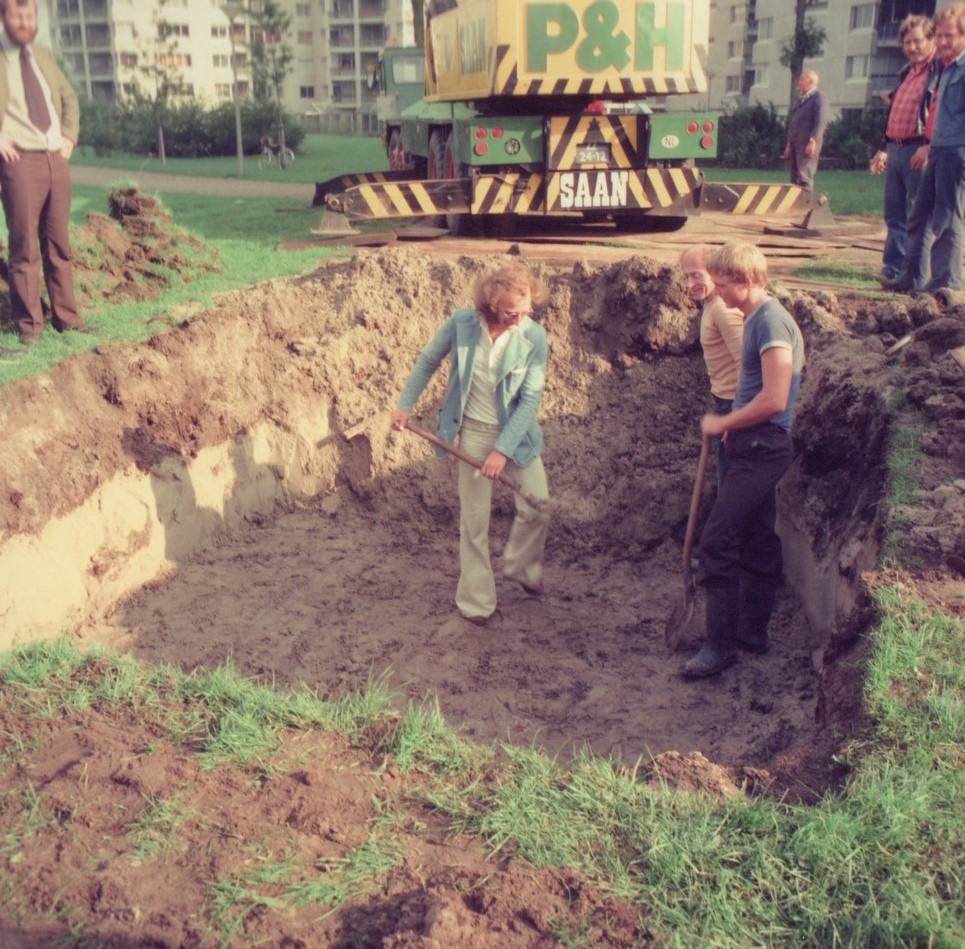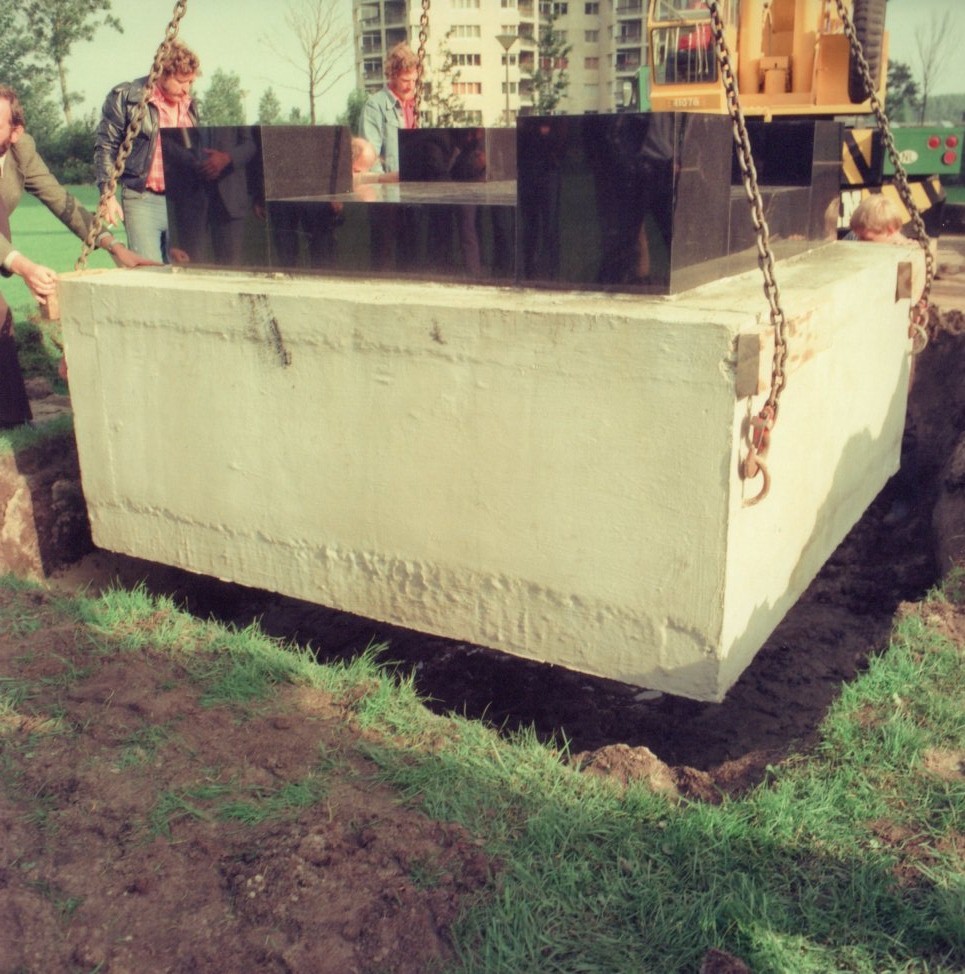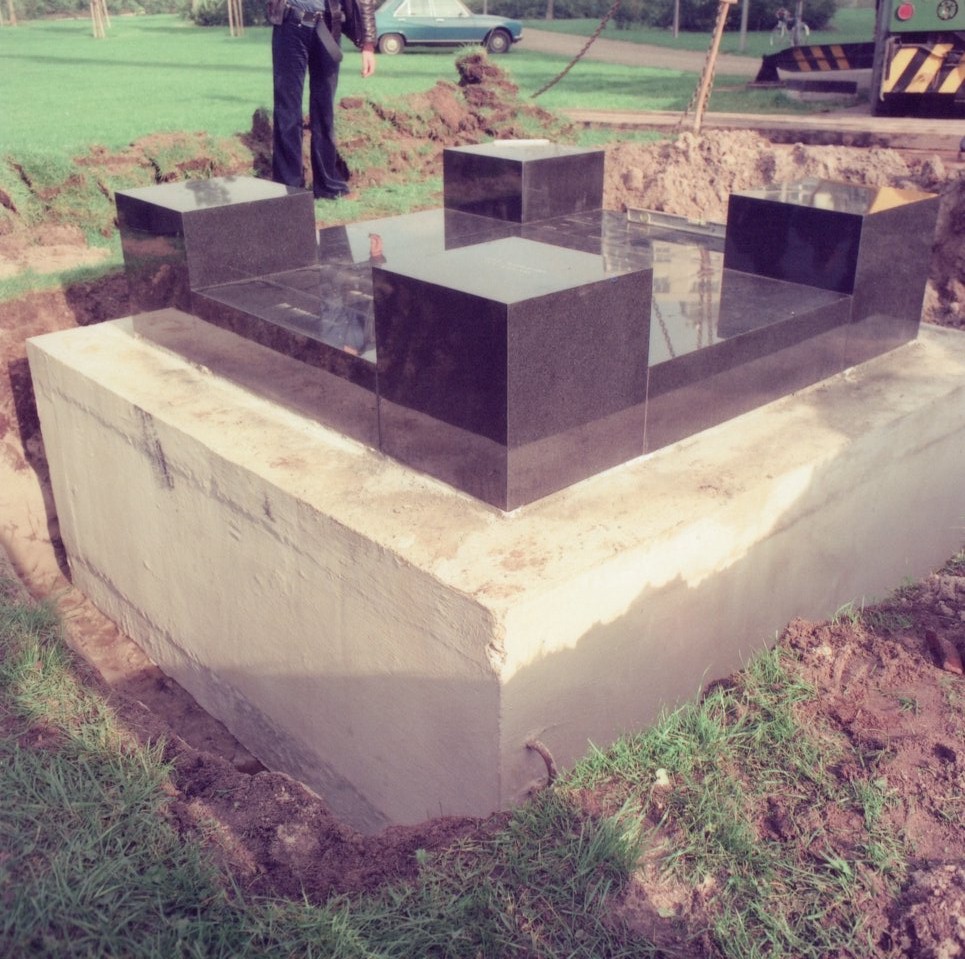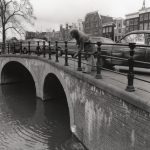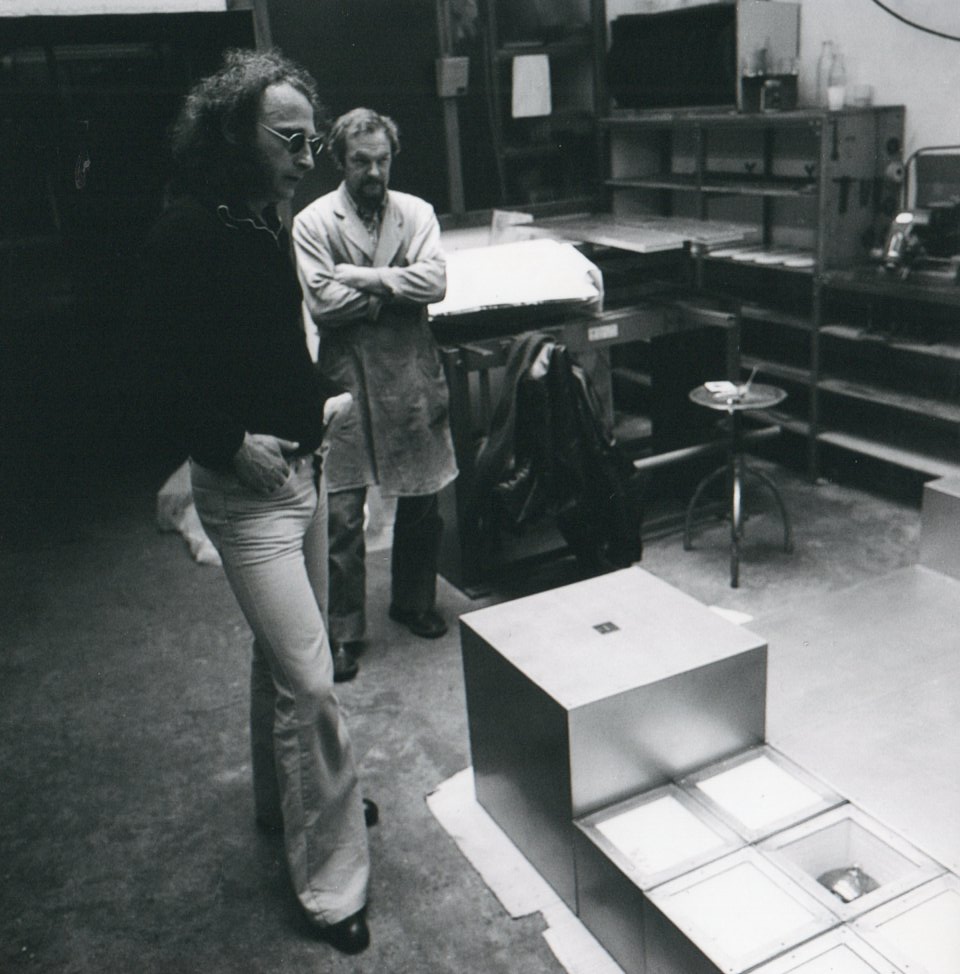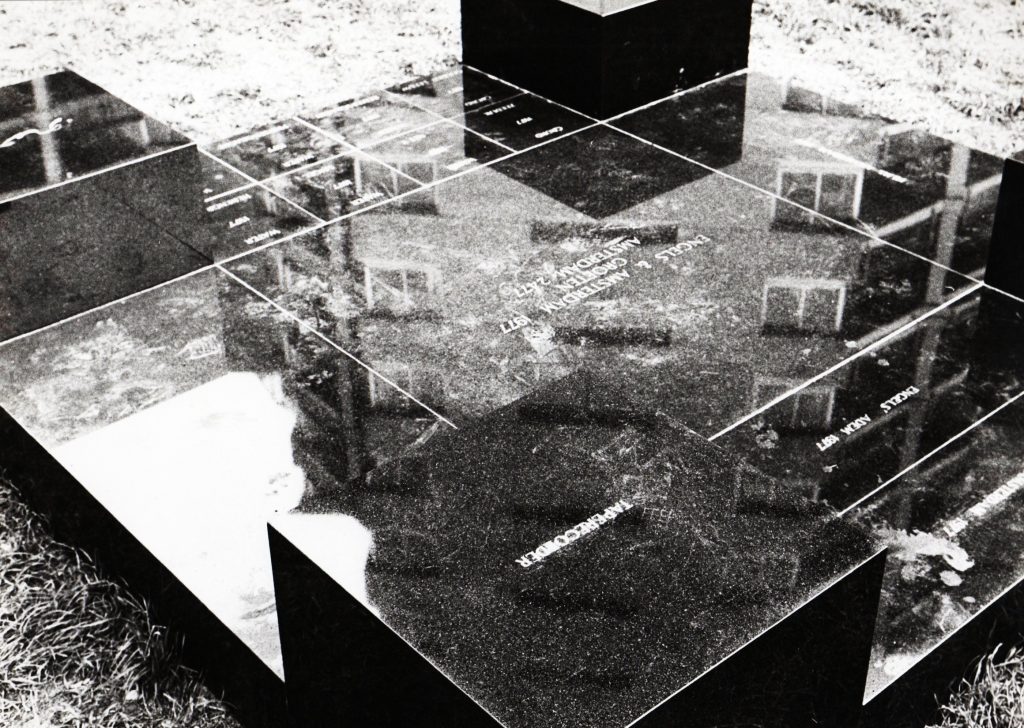
Amsterdam pays gold for air.
The breath of artist Pieter Engels (38) must remain buried in Amsterdam’s Bijlmermeer for five hundred years.
Not until 2477, when the Amsterdammer himself will have breathed his last for centuries, will the inhabitants of the capital city then be allowed to deflate the capsule that he had filled.
The artistic breath of Pieter Engels will be solemnly buried in a steel coffin on Friday. This coffin, along with sixteen others, is part of an enormous underground work of art on which the City of Amsterdam has spent more the a ton and a half. Above ground, the interested party will see nothing but a few blocks of Swedish granite on which the artist sends his greetings to posterity.
Engels and Amsterdam 1977 greetings to Amsterdam 2477″ is the inscription on the unique project, which originated from the brain of Pieter Engels. In 1970 the municipality of Amsterdam paid NLG 750 for the brilliant idea alone, and another NLG 150,000 for the execution, which was initiated by the Werkgroep Bijlmer. –
Because for the residents of Amsterdam in 2477, there will soon be many more surprises under the ground than just Engels’s ,, air. The blocks on Engels’ tomb already hint at the rich contents of the sixteen other chests packed into a single block of concrete: water from the IJ, water from the Singel, water from Prinsengracht, air from Amsterdam, films from Amsterdam Center, from the Bijlmermeer, from Central Station, from the harbor and from the air, soil samples from various places in the capital, newspapers, weeklies, a radio program on tape, and a film projector and a tape recorder to play it all. “For the radio program, I took the day of the elections,” the artist said. ,, Coincidentally, the messages and reports about the hijackings in Drenthe were also on there, which were broadcast in the evening. In one of the boxes I have also put a bank account of F 100, which can only be collected in 500 years. By that time the amount will have been increased by dozens of zeros. Half is intended for the heirs of Pieter Engels and the other half is to be used for the establishment of the Pieter Engels Museum,” says the artist, whose dozens of works are on display in the Stedelijk Museum in Amsterdam and the Museum Boymans-van Beuningen in Rotterdam. Pieter Engels is by no means ashamed of his ego-tripping for posterity. He likes the idea that, five centuries from now, the people of Amsterdam will make a find that he deliberately laid out for them. In the municipal archives they have registered where my work of art is, approximately at the height of subway station Ganzenhoef. It could well be that by 2477 people will have returned to the Stone Age, after a disaster or so. But even when they are much further on they will find it interesting to dig up something like this. I try as much as possible to be a universal artist, who doesn’t bind himself to one medium, but does everything that strikes him. People in 2477 may well enjoy that. “
In addition to the work of art that will be expertly put underground by public works of the municipality of Amsterdam on Friday, Engels is working on another impressive work of art for the city that also has something to do with underground”. He is making a symbolic work of art for the Weesperplein terminus of the metro, which will begin running in October. ,, The work is called: ,,the signature of the anonymous worker” , says Pieter. With its three straight beams, the A of anonymous symbolizes the three groups that have been involved in the construction: the client, the contractor and the worker.(Thea Detiger, 1977, various newspapers)
Subscriber’s submitted piece in the Volkskrant, L. Kapoen, September 26, 1977.
Lawn
In the Volkskrant of Monday, September 19, there was an article by Karel Schampers about the latest achievements of Pieter Engels. Now I myself live in the Bijlmermeer, in Groenhoven, residential block Groenhoven, as the author somewhat disparagingly calls it. If you are wondering how the Bijlmermeer got its largely unjustified bad name, the cause may well lie in the nagging of some media. A sentence from an article by Cor Groeneweg in the Volkskrant of the same day may serve as a further illustration: ,, . the Bijlmermeer is alienating”. It is a pity that an entire district is condemned with regularity. Incidentally, Groenhoven is a group of beautiful, very livable residential towers. Yet I am pleased that we got this work from Pieter Engels and not something like the rest of the Bijlmermeer. These generally don’t show too good taste and insight into what the residents would appreciate anyway. The big advantage of Engels’ work is that it has been stored underground for the most part, so it does the least damage to the lawn, for which I am sincerely grateful. Perhaps the next work of art could be entirely underground, without any signs, not even the smallest sign.

